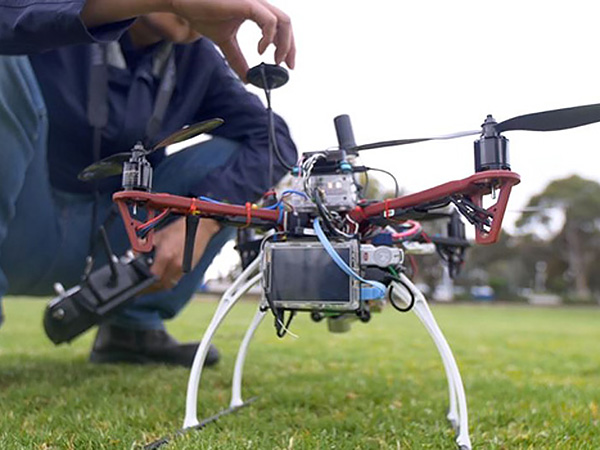Monash plants seeds to improve farming practices

Monash University engineers are working with Australian farmers to help them improve irrigation practices by using autonomous drone technology.
Monash University engineers are working with Australian farmers to help them improve irrigation practices, reduce water use and maximise crop harvest by using autonomous drone technology.
As severe drought continues to devastate farmland and impact food supply across Australia, a Monash University research team, led by Professor Jeff Walker, has spent the past two years developing a drone-based autonomous soil moisture mapping system for irrigated paddocks.
The team has recently completed field experiments using optical mapping which can determine soil moisture levels in the near-surface. The data taken from the drone can be downloaded and used to produce a map of ground soil moisture levels to inform the farmer on how best to irrigate the paddock.
Drones have the capacity to analyse soil moisture at metre-level scales within a paddock, allowing farmers to focus on specific crop irrigation and overcome the challenges of aircraft or satellite mapping.
“We need to produce 60% more food with the same amount of land and water, and we can only achieve this by being more efficient with the water we use through irrigation,” Professor Walker said. “We need to know how much the crop needs, how much moisture is already there and apply just the right amounts of water in the correct places to avoid wastage while keeping the crop at its peak growth.”
Good soil moisture allows for the optimal growth and yield of crops, while at broader spatial scales also regulates weather, climate and flooding. The water levels in the soil controls evaporation over land and thus the energy fluxes into the atmosphere. This drives the atmospheric circulation, which drives climate.
“If the soil is too dry, crops can fail due to a lack of water. But if the soil is too wet, crops can not only fail but pests and diseases can flourish,” Professor Walker said.
Professor Walker said the farming industry has welcomed smarter and more automated practices, but there are few tools available to make the already difficult workloads of farmers more manageable.
“At best, farmers might have a single soil moisture sensor in a paddock, but this doesn’t allow for the optimal application of water, especially as this resource becomes scarcer. Plus, it won’t take into account moisture variation levels across the individual paddocks,” he said.
As crop failures due to a lack of water have enormous human and financial consequences, Professor Walker said Australian farmers need to become more efficient in soil moisture mapping by using ‘precision agriculture’ methods such as autonomous soil moisture mapping using drones.
“Farmers also need to cooperate; water conservation and efficiency is a collective responsibility. Everyone needs to do their part to use water more effectively or we’re at risk of running out completely. As the world’s driest continent facing climate change, a growing population and a greater demand for food, water conservation should be one of Australia’s top priorities,” he said.
To see the Autonomous Drones for Soil Moisture Mapping project in action visit vimeo.com/307394713/95a9c25d5c.



